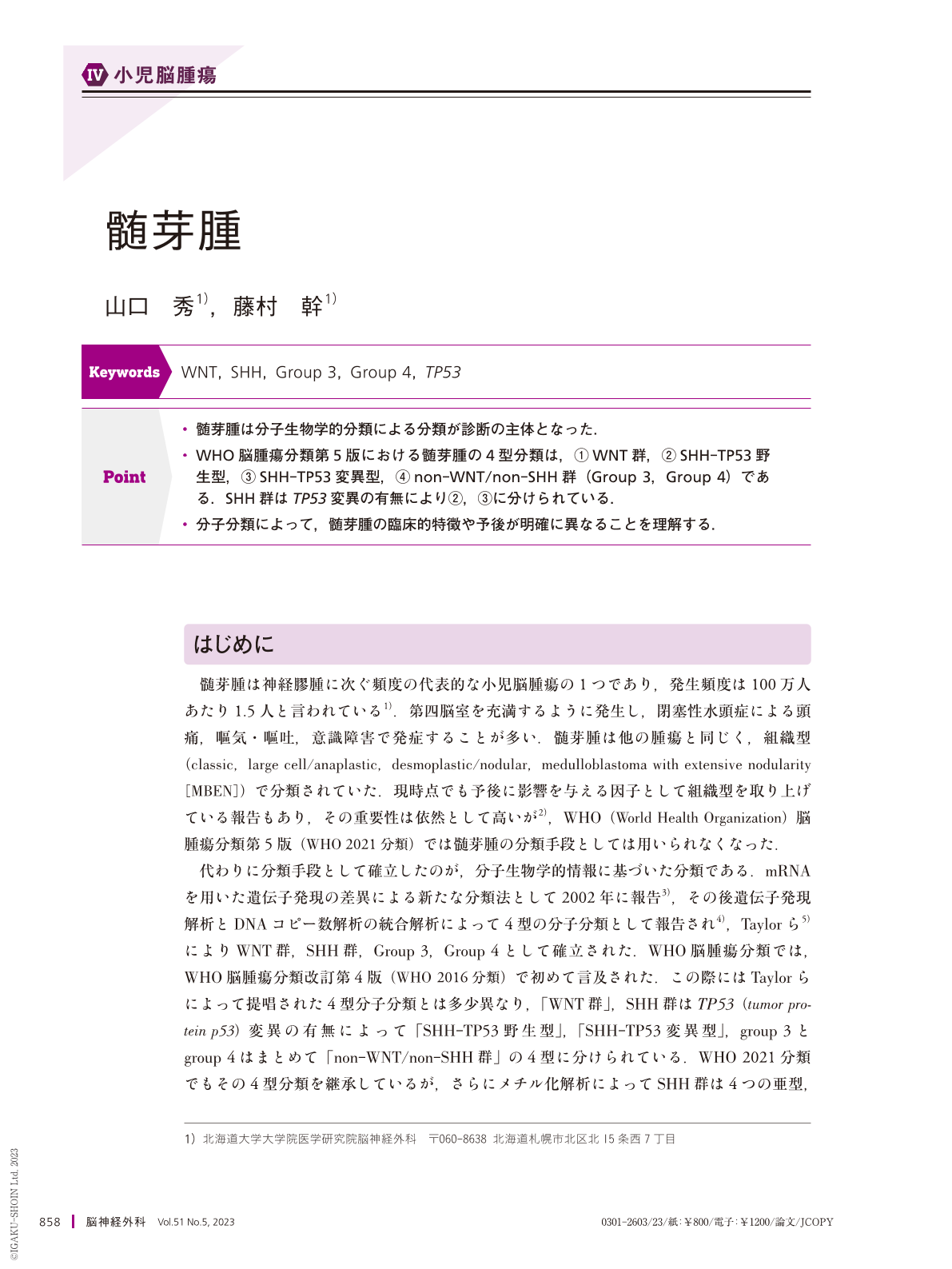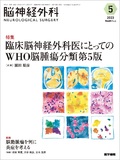Japanese
English
- 有料閲覧
- Abstract 文献概要
- 1ページ目 Look Inside
- 参考文献 Reference
Point
・髄芽腫は分子生物学的分類による分類が診断の主体となった.
・WHO脳腫瘍分類第5版における髄芽腫の4型分類は,① WNT群,② SHH-TP53野生型,③ SHH-TP53変異型,④ non-WNT/non-SHH群(Group 3,Group 4)である.SHH群はTP53変異の有無により②,③に分けられている.
・分子分類によって,髄芽腫の臨床的特徴や予後が明確に異なることを理解する.
In the 5th edition of the WHO classification, medulloblastomas, which are representative pediatric brain tumors, are categorized into four groups: WNT, SHH-TP53 wild, SHH-TP53 mutant, and non-WNT/non-SHH, based on their molecular background. While the histopathological findings still hold importance in predicting prognosis, the histopathological classification is no longer utilized in this edition. SHH medulloblastomas are further subdivided into two groups based on the presence or absence of TP53 mutation, as their clinical characteristics and prognosis differ. Group 3 and Group 4 medulloblastomas, recognized as distinct molecular groups in clinical practice, are combined into a single group called“non-WNT/non-SHH”,because they lack specific molecular pathway activation. Furthermore, based on methylation profiling, dividing SHH medulloblastoma into four subgroups and non-WNT/non-SHH medulloblastoma into eight subgroups was proposed. Understanding the unique clinical characteristics and prognosis associated with each group is crucial. However, it is important to acknowledge that our current understanding of prognosis is based on treatment approaches guided by clinical risk factors such as postoperative residual tumor volume and the presence of metastatic disease. This molecular-based classification holds promise in guiding the development of optimal treatment strategies for patients with medulloblastoma.

Copyright © 2023, Igaku-Shoin Ltd. All rights reserved.


